Looking at the role of the agave farmer

Agave spirits, such as mezcal, were the fastest growing spirits category in 2022. As international demand for mezcal increases, there is more need for agave, which in turn influences the dynamic in which the plants are processed as part of the mezcal market. These days, developing a brand for global distribution, means more often than not, mezcal producers need to look beyond their own fields.
Many of the mezcal producers I visit grow their own agave plants. Their palenques have small viveros (nurseries), where they care for seedlings. After the first six months or so, these plants become hardy and can be replanted further afield, often in land collectively owned by family members. Typically these producers come from generations involved in the world of agave propagation and mezcal production.
Agave, known colloquially as maguey, comes in many shapes and sizes, with varieties endemic to different parts of Mexico. They require little water, which allows farmers (magueyeros) to use land that might otherwise have been left fallow. In light of unpredictable weather patterns, it makes sense for farmers to pursue agave as a more durable crop.
A brief history of agave production
In Oaxaca there are approximately forty varieties of agave grown to make mezcal, with particular varieties local to different regions in the state. There are so many varieties that they are grouped into scientifically registered families. Each family has aesthetic similarities that translate into the flavors that unite them. The broad extent of agave are known as wild (silvestre), by definition not domesticated. However, driving through the state of Oaxaca you will see fields of silvery green, flanking the highways, and rolling over distant hills. These fields are packed with Agave Angustifolia, the famously domesticated variety, Maguey Espadin.
Luis Nogales describes how the Agave genus was registered as the scientific term in 1753 by Swedish Naturalist Carlos Linnaeus. The root of the word comes from the Greek meaning noble or admirable. ‘Noble’ is a term I often hear used about Espadin specifically, as an admirable plant, with a comparatively short grow time and high yield… for Agave. As beautiful as these oceans of agave appear, the consistency of the view is cause for concern. When I first arrived in Oaxaca ten years ago there was clearly a more diverse land usage. Despite its’ ‘noble’’ qualities, Espadin presents issues about monocrop farming that can create significant problems such as nutrient stripped earth and erosion.
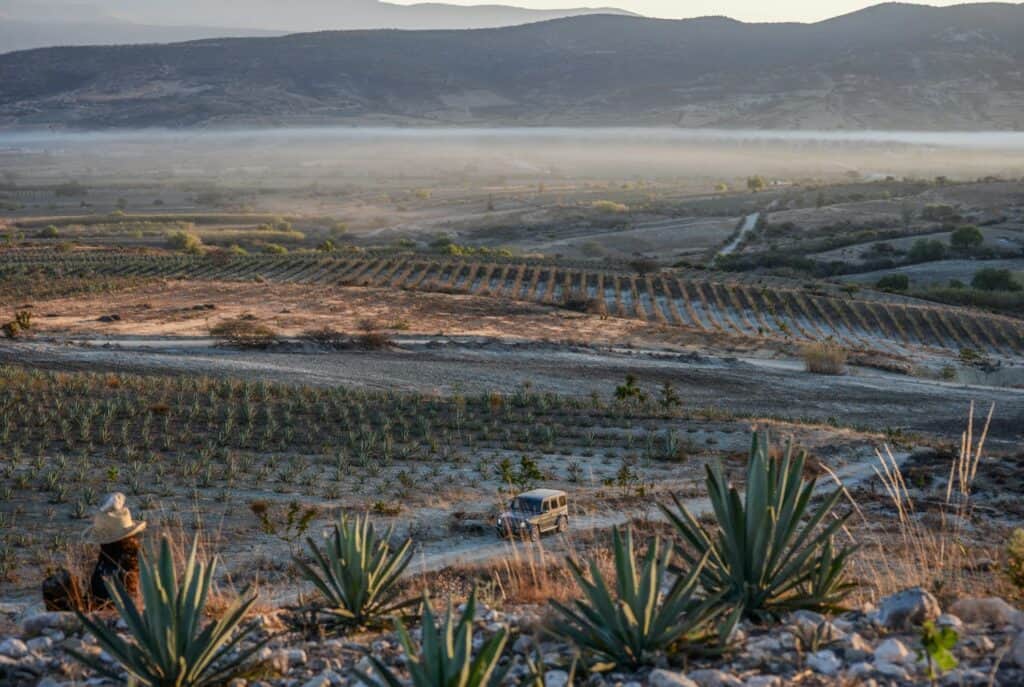
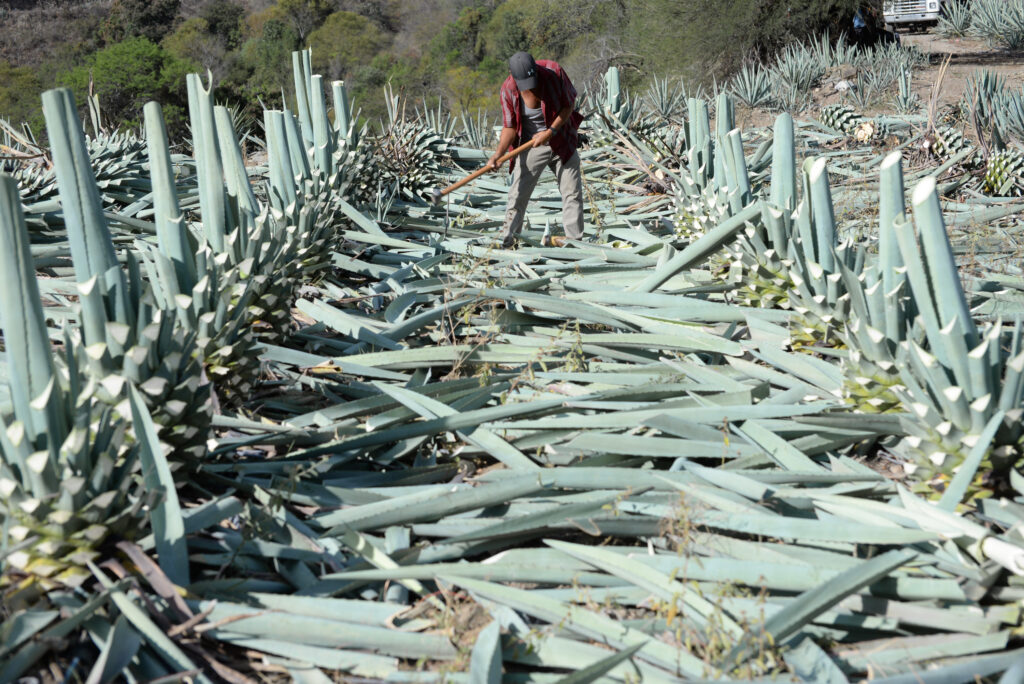
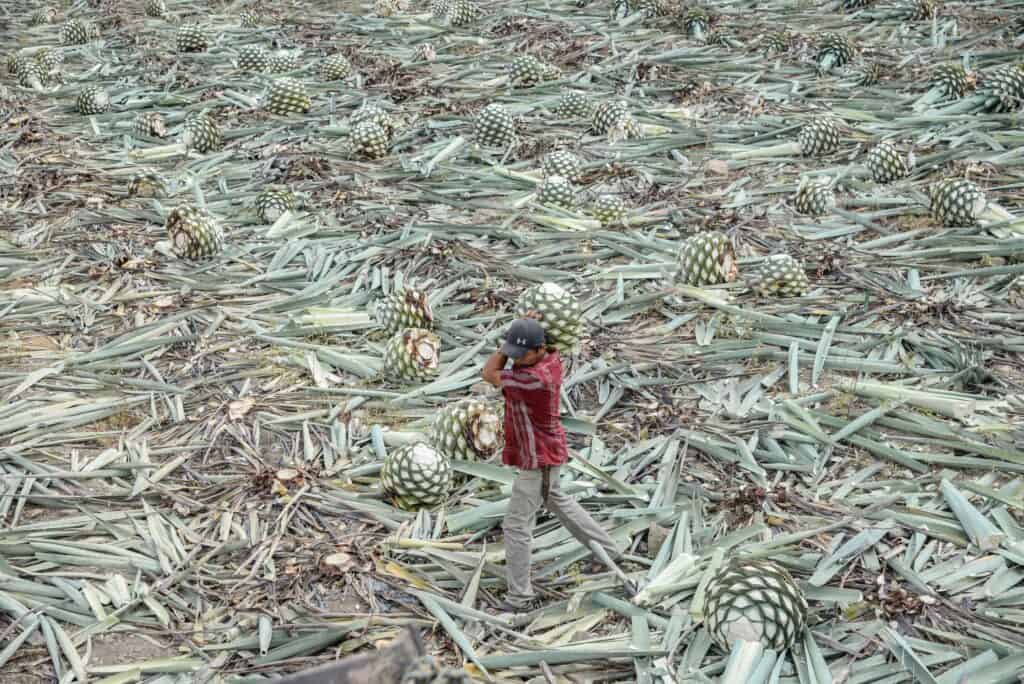
The commercial use of Espadin has brought some of the issues, previously associated with Tequila production, to Oaxaca’s doorstep. Espadin is genetically similar to the Tequilina Weber agave, aka blue agave, used in Tequila, and is at the heart of most mezcals finding their way to our favorite bars. The natural grow time and yield are similar. As is the ability for this agave to grow abundant clones from the rhizome, that can be used to reproduce mother plants without waiting on seeds.
Agave plants only flower and create seeds once in their life cycle. Producing the flower, or quiote, is when they are considered mature. Traditionally farmers let the plants reach this point, as this is when they yield the most sugar. Unfortunately, rising demands put farmers under pressure and some are taking to harvesting plants before they are fully mature, let alone allowing them to produce seeds. The fact that these agaves don’t flower makes farmers reliant on genetically identical clones. Lack of biodiversity means that the plants are at greater risk from disease.
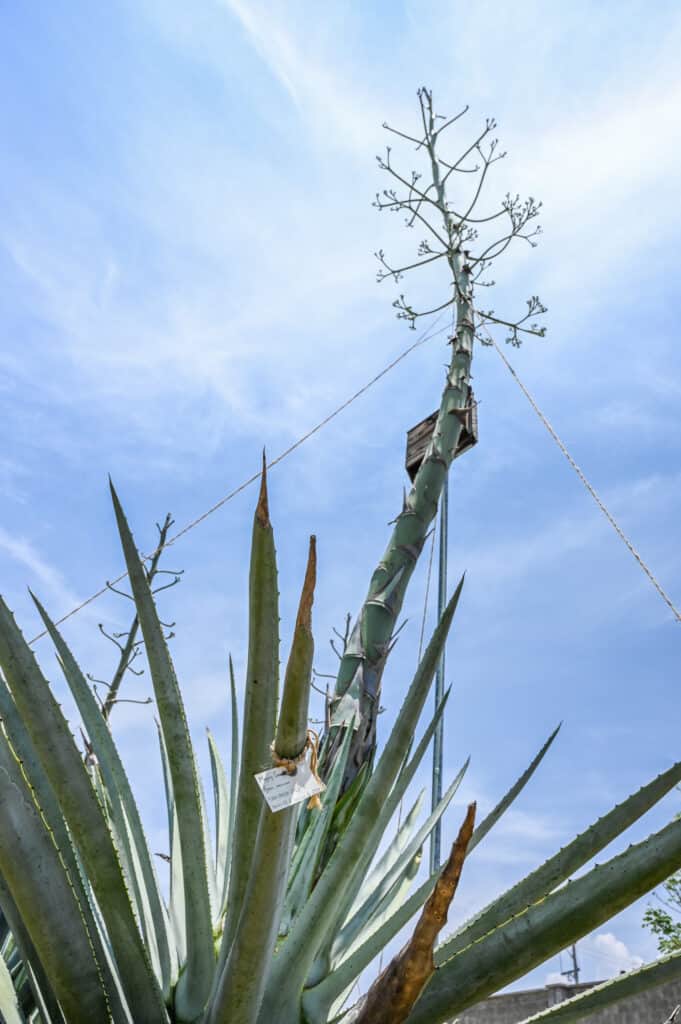
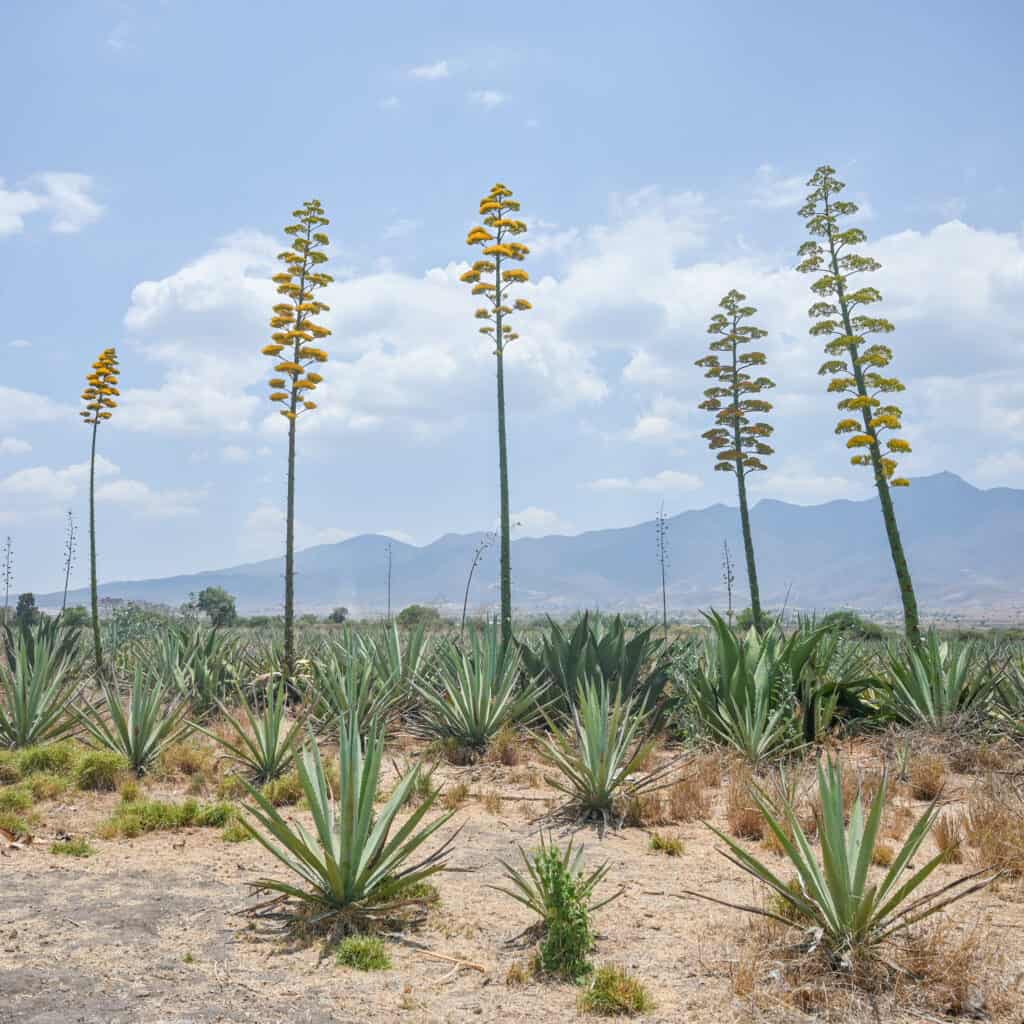
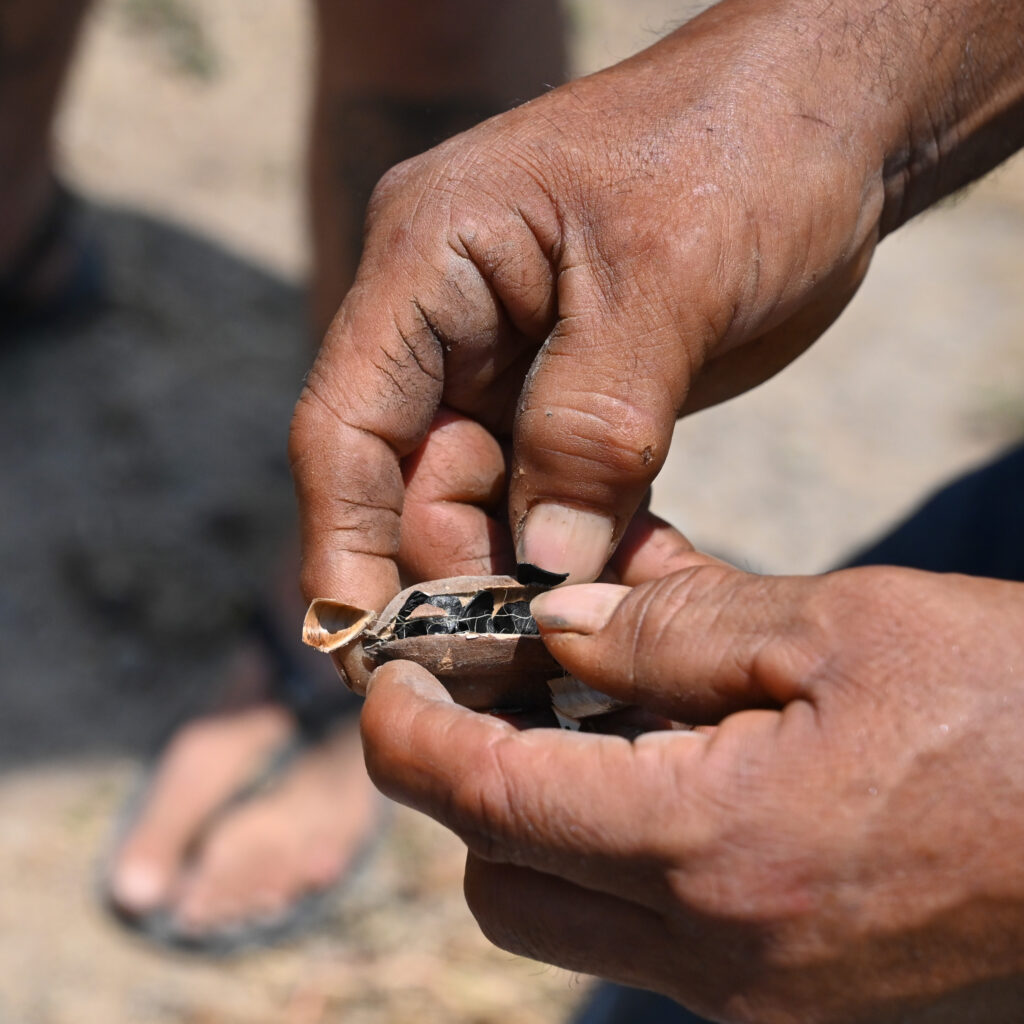
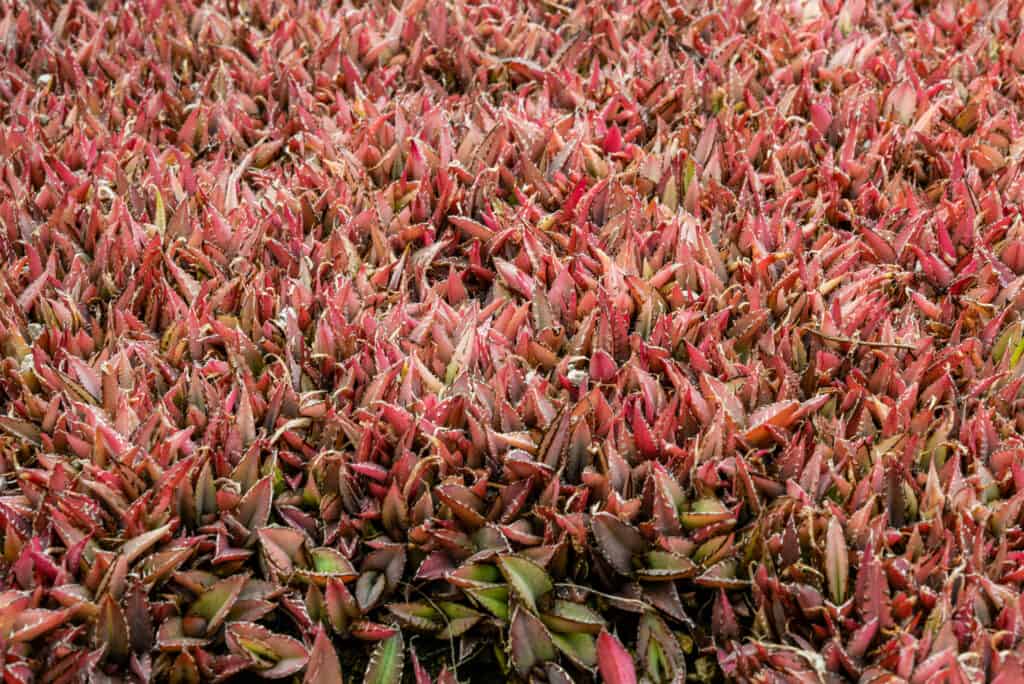
What is a Magueyero?
The Asociación de Maguey y Mezcal Artesanal (AMMA) defines the chain of production from seedling to bottle succinctly as the ‘maguey mezcal production chain’. This begins with ‘nurserymen,’ those dedicated to the propagation of the maguey in a nursery that will later be cultivated for future use in the production of Mezcal. Then the ‘maguey producer’ (magueyero) cultivates the maguey until mature.
Probably best known in the process is the ‘mezcal producer’ or mezcalero, defined by AMMA as the “physical or moral person who has the necessary infrastructure, documentation and skills for the production of mezcal and who is located within the territory protected by the Mezcal Denomination of Origin.” The “packer” is whomever has the legal infrastructure, documentation and skills necessary for the packaging of Mezcal, while the marketer is the owner or licensee of a trademark registered in Mexico.
The best way to maintain prices is to own your agave fields, rather than relying on the open market. Larger players in the industry either maintain their own crops, and/or have long-term contracts with magueyeros which allows them to set a price and contribute to controlling the cycle of boom and bust, famous in the world of agave production.
Intimate relationships with agave and its surroundings are prevalent amongst the mezcal producers who also manage their own agave. They grow most of their espadin, and are increasingly focused on cultivating ‘silvestre’ varieties. Speaking to mezcaleros who grow their own, they are clear on the organic approach, with elements from the mezcal process recycled in as many ways as possible. It is also encouraged to allow a certain amount of plants to complete the flowering cycle. This is important to protect the quality of the soil, water table, and genetic diversity of the agave. Considering minimal government regulations, collectives of mezcaleros and magueyeros with shared values of the future of mezcal and agave are admirable.
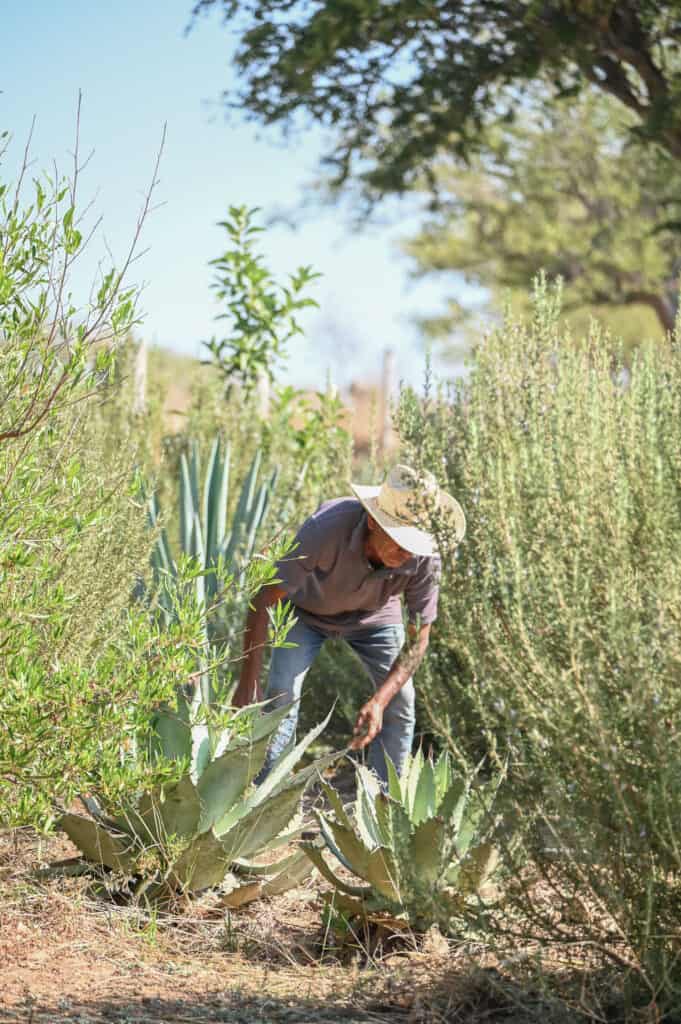
How do Magueyeros work?
The relationships between magueyero, mezcalero and producers who work between these concepts are quite varied. Some mezcaleros who grow agave need to supplement from other magueyeros, while others sell seeds, clones and grown agave to other mezcal producers. It is an open market, so the way these exchanges happen fluctuates from season to season.
Erasmo Hernandez is the grandfather of Jessica Hernandez, who produces Espina Dorada, a mezcalera I am fortunate to visit often. Typically Erasmo sows in the months of April and May. “Sometimes in June you can sow a little, we have to fallow the land, lay a line to have straight furrows and sow the shoots one by one. These baby magueys have to be taken care of and when they have a lot of grass around they have to be cleaned so that when they grow up to be beautiful seasoned magueys.”
Erasmo describes how the job as a magueyero it is not only planting and waiting for the maguey to be harvested. “You have to take care of it, clean it and protect it.” He says that while his agave plants are in the ground he will go and check on them every two days. This is to keep the area weed and pest free, but also to help prevent poachers. “Thank God it hasn’t happened to me, but here in town other magueyeros have been robbed. Who knows what time they go, maybe it’s night and no one sees them. Those who steal are very crafty. They are already bad people.”
Although Erasmo used to produce mezcal, now he focuses most of his time on growing agave for his family, alongside some of the traditional ‘milpa’ crops such as corn and beans.
A mezcalero I know well, who grows his own agave is, maestro Carlos Mèndez Blas. His family has been making mezcal for generations and over time they have cultivated extensive fields from which he sources plants. He has been developing his business over the last decade, supplying each stage in the chain of operations, from plant nursery to exported product. Based in Santiago de Matatlan, Oaxaca, he not only produces his own brand, Palomo, but also supplies agave and /or liquid for several other brands, while providing bottling services and warehouse storage to even more. When I first met him he was working on a project with university students to study agave from seed to flower.
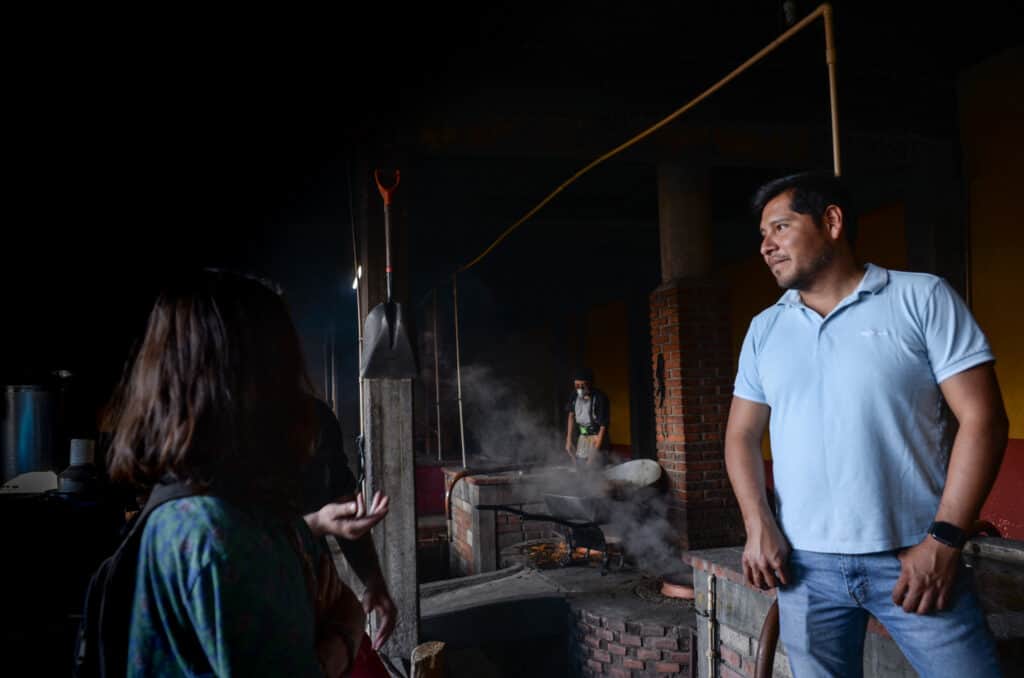
Blas describes an open market for agave, where supply and demand dictate the price of plants with little to no government regulations. “There has been a huge change in the price over the last five years. It is more expensive now and it’s because the tequila industry keeps growing as well as mezcal.”
Although certification of mezcal has always been a contentious topic, Blas feels that certification is something that “gives security to the consumer.” Certification allows the consumer to find out about the producer and the prestige of the product. Carlos thinks that he most important things when working with a palenquero is the flavor, and the quality, the tradition and the prestige”.
Blas describes his goal going forward as, “ to show people what we do, how we do it, and to make good, well known mezcal. I’d like to change many things in my own town to make a better environment, and take it from there, to make state and national change.”
The Palacios family makes Salvadores mezcal. Due to disruption in their family tradition, which meant they had to put aside making mezcal for a generation, they are an example of a family brand that have to look beyond their own property for agave. Although they don’t have standing contracts, they work regularly with the same magueyeros, and are conscientious about sourcing their raw materials.
Miguel Palacios describes how there are two types of authentication when they buy agave. When they buy espadin, they receive paperwork known as the ‘guia,’ which documents the precedent and ownership of the plants and land where they were harvested. Land owners can apply for this paperwork free of charge. “When the agave is wild, he brings us a document from the head of the municipality or town where it was cut. This document serves a similar purpose to the ‘guia.’ It says where the agave was cut, how many plants were cut, and that there is permission.”
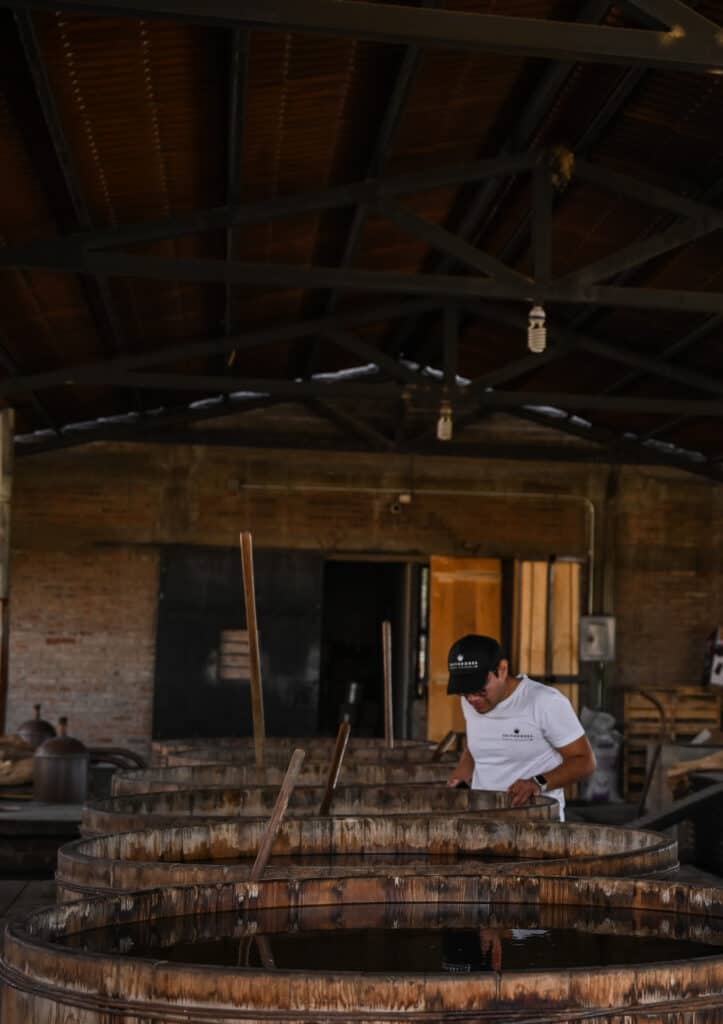
Maestro Eleazar Brena produces mezcal Admirable in his hometown of San Luis Amatlan, Oaxaca. He is a third generation mezcalero and professor at the Universidad de la Sierra Sur where he teaches Sustainable Development Theory. “This theoretical framework has influenced my mezcal project, with the aim to develop production with the principles of sustainability, and of social and environmental responsibility.”
After graduating as an agronomist Brena’s objective was to grow agave. While establishing his fields he began to work in a community palenque alongside his father Marcos. “My father was a pioneer in the production of mezcal, and upon my return from University, I established a palenque for him to reactivate his production of mezcal.”
Currently Brena only uses agave he grows himself. He has approximately ten hectares that he tends using sustainable management practices, promoting a diverse crop, including maguey coyote, agave Lyobaa, tobala, and cuishe. He says crop management is essential, controlling weeds and removing base leaves from the agave to promote growth. “The challenge I have is to continue germinating wild agave seeds and take them to their natural habitat.”
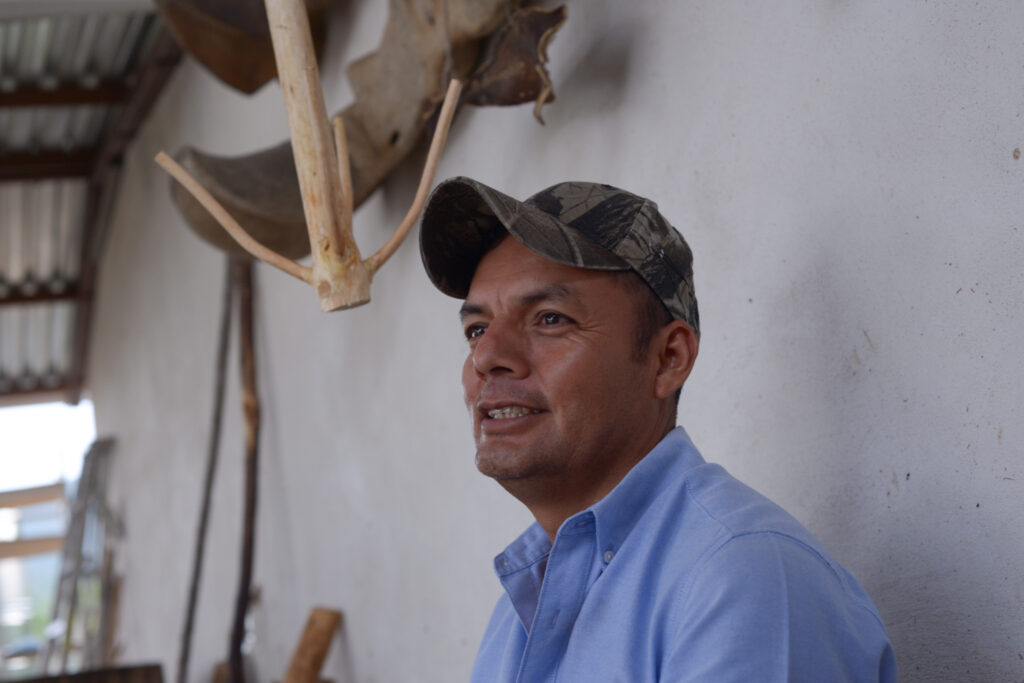
What does the future look like?
Mezcal has found its footing as an alternative agave spirit, for the conscientious consumer, to the more commercial world of Tequila. Consumers are pursuing transparency, increased sustainability, and more ethical business practices from the products they buy. Artisanal mezcal offers a great option, but it is important that sustainable practices receive recognition and support. With growing popularity, traditional mezcal producers, researchers and fair trade promoters are seeking to conserve the sustainability and cultural knowledge of traditional agave spirits. Small-scale producers apply agro-ecological processes, growing multiple varieties of genetically diverse agave in an ecologically and socially sustainable manner.
Blas describes producer stage solutions to these issues, including “planting fields with different varieties, leaving a selection for reproduction, and also increasing the price.” Mezcaleros and marketers can also support by doing due diligence, buying mature responsibility sourced agave. Consumers should research the brand they are drinking and invest in bottles with a taste and story that they love, rather than looking for the cheapest option.
Fair trade networks are beginning to be constructed, building on the effort of individual producers. In the model of agroecological management as practiced by collectives such as those behind Real Minero with the support of Proyecto LAM, agave plants are reproduced using seeds to promote genetic diversity. Agaves are interspersed with other plants, increasing the presence of pollinators.
Independent research and resources are also being developed to help with the chain of production between magueyero, mezcalero and consumer. For example,The Maguey Exchange is a new project that provides technology that empowers producers, while “connecting buyers with the culture and tradition of agave spirits”, and supporting the environmental preservation of regions where these spirits originate.
Speaking with Rob Weir, co-founder and CEO of the Maguey Exchange, I was curious what brought him to embark on such a complex and sensitive task. Weir is a US army veteran with a background in strategy and logistics. He explained his motivation for wanting to “combine generational know-how and modern technology to bring frontier markets into the digital economy.”

“What triggered me to create the Maguey Exchange was seeing how commercialization, the pressure of growth, and asymmetry of power dynamics were contributing to a situation that did not benefit the agaveros, producers, or the communities from which they come, simply because everyone lacked the economic, operational, and environmental information to make better decisions. I saw firsthand how magueyeros and producers were forced into a “crabs in a barrel” scenario where, due to limited information, they were making choices that decreased opportunities for everyone.”
The Maguey Exchange mission states that there must be a “balance between planting and harvesting to protect our natural resources and biodiversity for future generations.” That is why they work with producers and buyers to “optimize management initiatives, forecast environmental and production impact, and encourage the use of waste and natural inputs as a resource”. They use digital technology to help monitor these practices: “Although technology is not a substitute for good policies and implementation, it can greatly accelerate development if effectively harnessed. ”
Digital technology and shared knowledge goes a long way. It helps producers understand their options, shared challenges and see the bigger picture of what is happening in the agave market.
Maguey Exchange claims to use digital technology to create systems optimizing the supply chain, while increasing transparency, “because true sustainability can happen when we fully understand our impact on the environment and communities within it.”
Another form of technology that has begun to play is mechanization. Until recently agave was brought from the field to palenque by donkey. Now it is commonplace to see huge trucks carrying tons of plants, on the highways of Oaxaca, often receiving raised eyebrows from local mezcaleros.
However, although mechanical technology has significantly enhanced efficiency in some areas of Mexican farming, there does not seem to be much impact on the world of growing agave. Mechanical solutions are expensive compared to manual labor. Machetes and coas are low maintenance compared to modern equipment. Plants are sown by hand, tended and eventually harvested all without modern methods or machinery. The manual traditions stretch back hundreds of years, passed down from one producer to the next. Magueyeros and their workers spend a lifetime growing with the agave. Over the years they learn how things work. They understand plants, the earth, and how weather and pests can impact the crop.
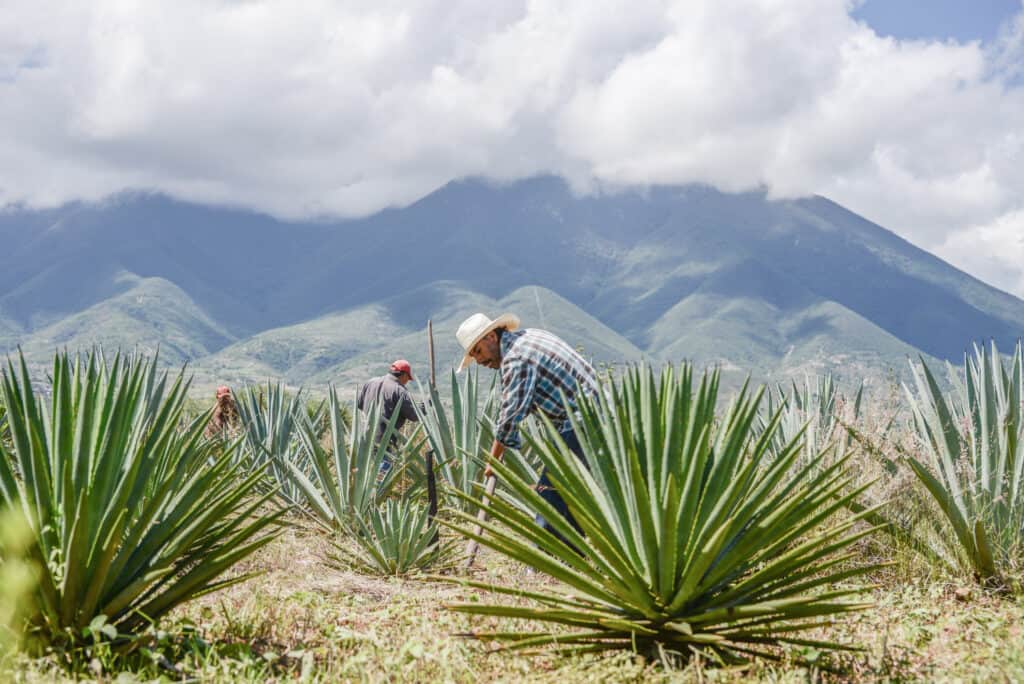
The plants themselves make mechanizing the harvest almost impossible. Blas says “so far I don’t know any perfect machine to plant or harvest agave.” The human touch is necessary, from harvesting adult plants, each with a significantly different scale and weight, to extracting clones without damaging the mother plant. Imparting generational knowledge while tending the agave, sensitive to its growth cycle, has ensured high quality work and product amongst small scale mezcal producers. In Oaxaca, it is recognized that this knowledge and these traditions have value for the future, valuing the people and their relationship with the land. .
Luckily for consumers they can find a great deal of information about the mezcal they are drinking right on the bottle. Most brands and mezcaleros are keen to share details of their sustainable practices, proud of supporting the future of their industry. This can include the name of the maestro mezcalero, location of production, where the agave is grown, details of each step in the process, as well as holograms and QR codes labels placed on bottles after the mezcal has been certified. Transparency is the buzzword for the sustainable future of this spirit, an open dialogue between each step in the process from magueyero, to mezcalero, marketer and consumer.

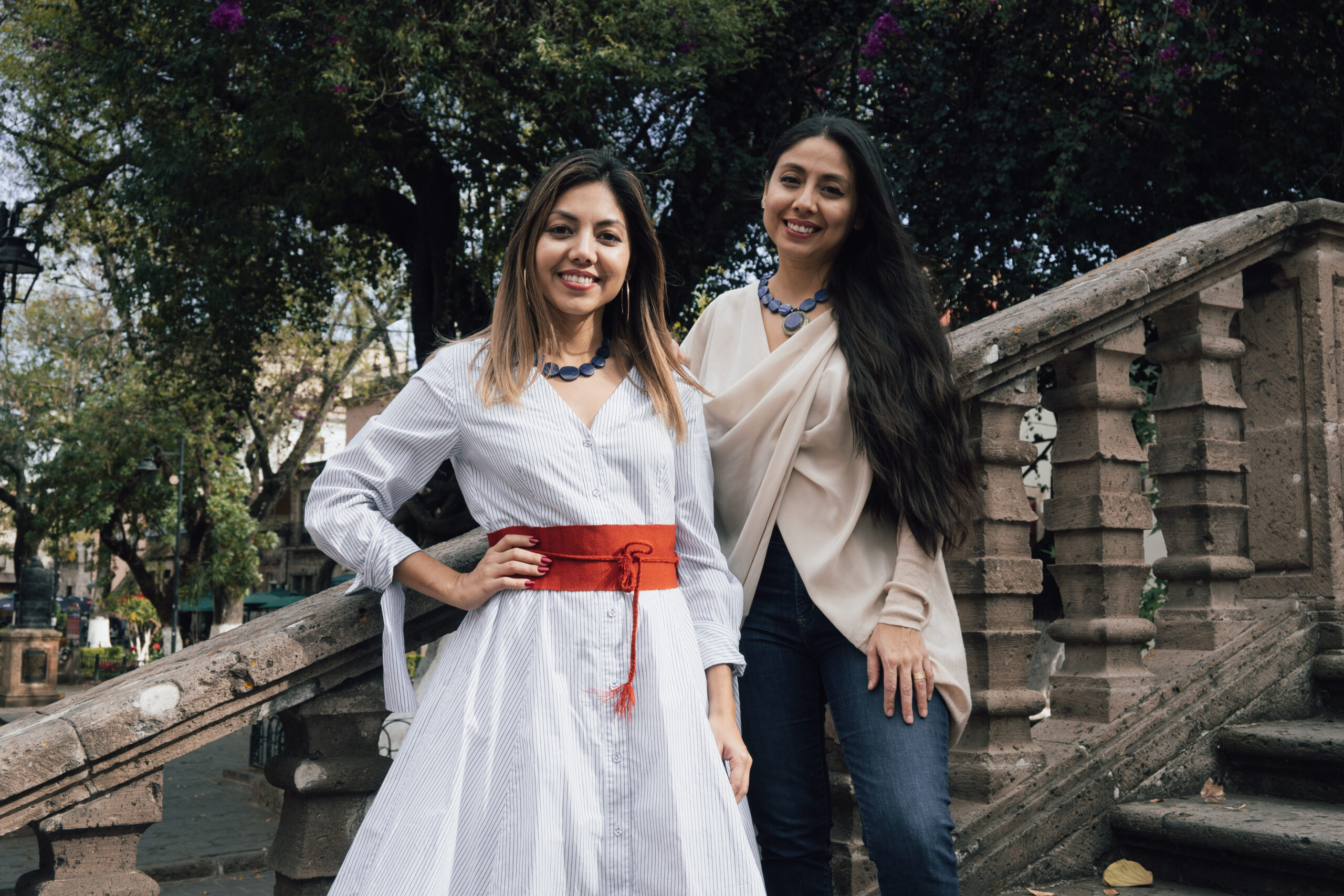

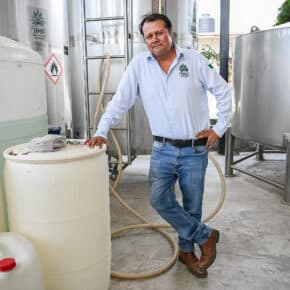









Leave a Comment